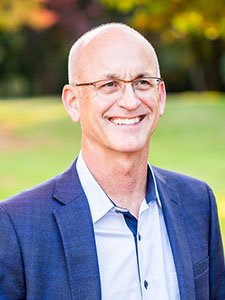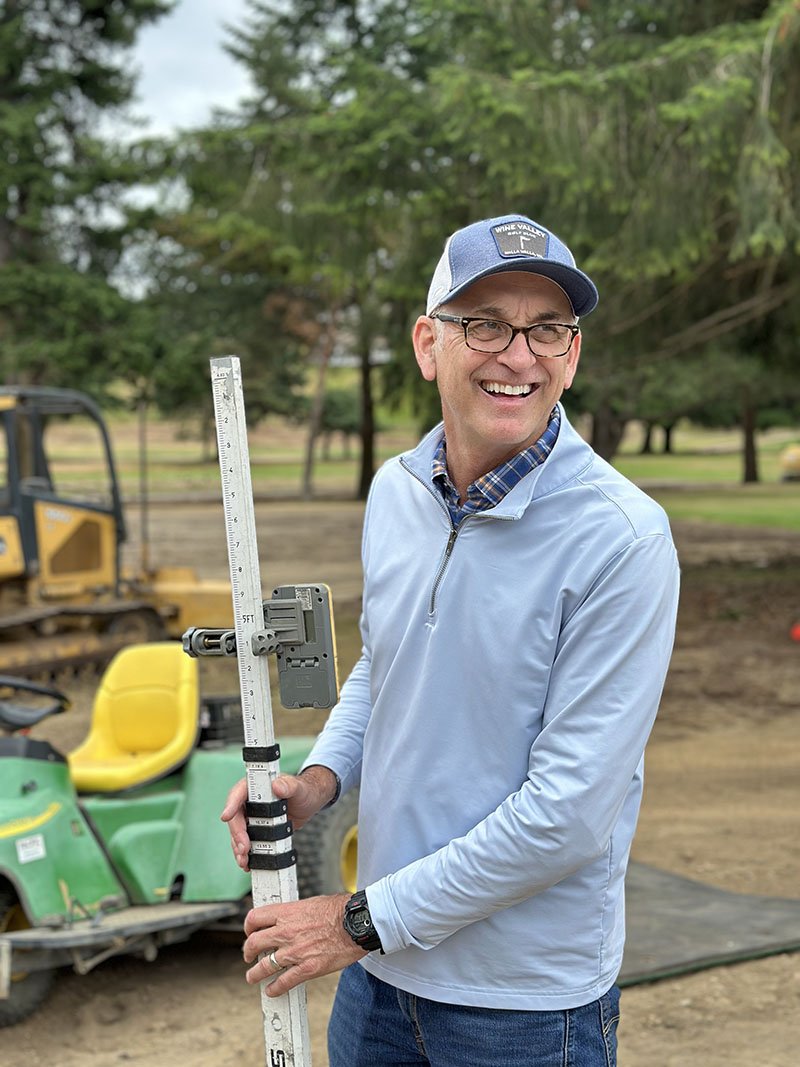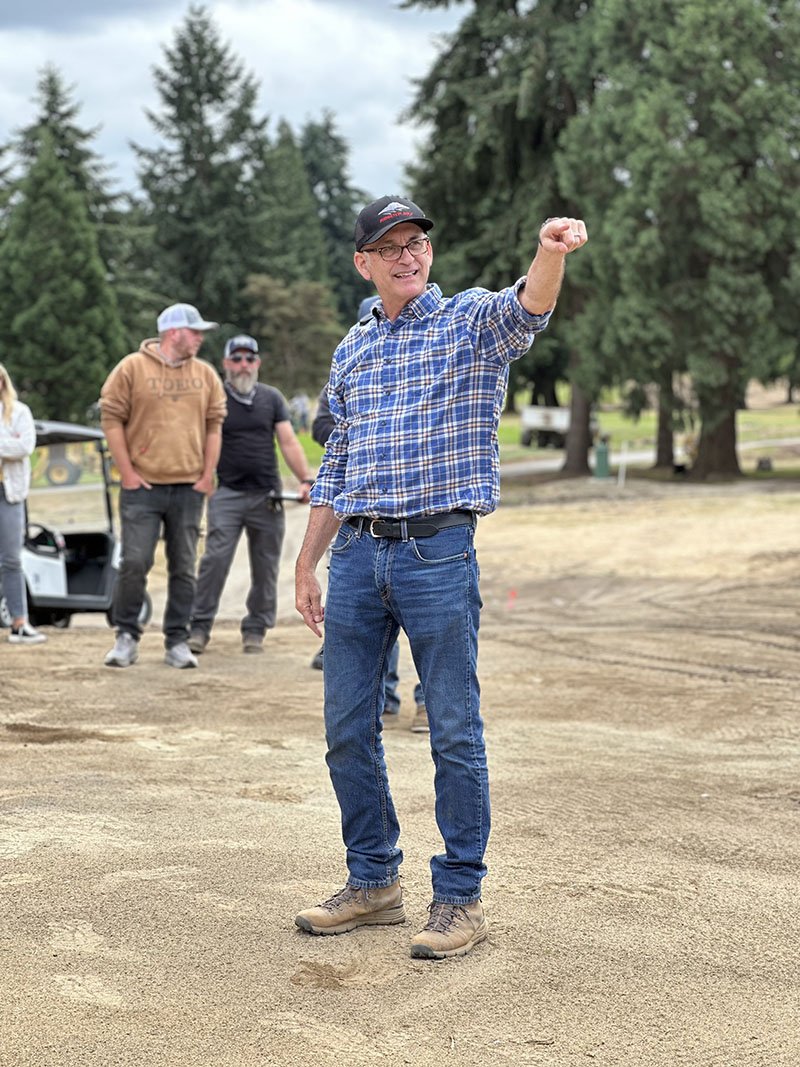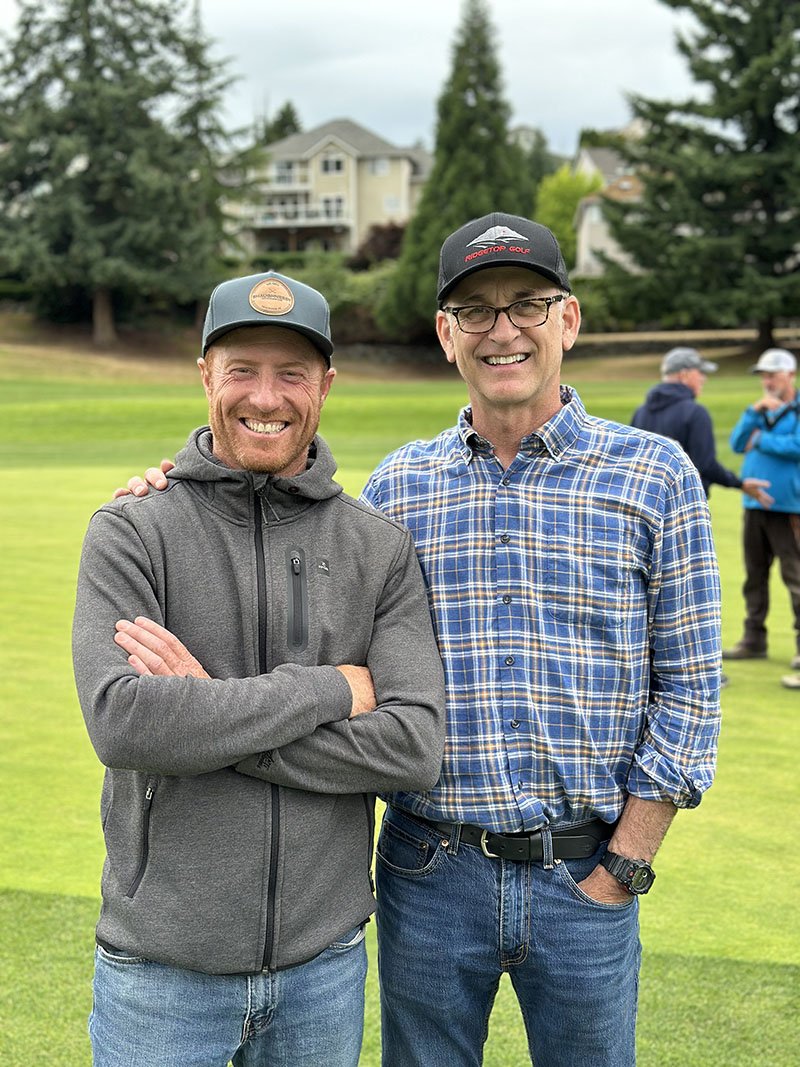
Dan Hixson’s Vision Shines at Indian Canyon and Beyond
PGA Professional and golf course architect Dan Hixson has made a lasting impact on Northwest golf—most recently through a standout bunker renovation at Indian Canyon Golf Course in Spokane, just in time for this year’s Rosauers Open Invitational.
Known for his thoughtful restorations and original designs like Wine Valley and Bar Run, Dan comes from a proud golfing family: his late father Harvey was a beloved PGA member, and his brother Doug was recently honored as Oregon Chapter PGA Golf Professional of the Year.
Dan doesn’t promote himself—no website, no business card—but his work speaks volumes. Read the details in this fascinating interview.
Let’s start with Indian Canyon. You just completed a major bunker renovation ahead of the Rosauers Open Invitational—what were some of your design goals for that project, and how do you think it will play differently this year?
My goals changed for the project when I was first hired, after studying the existing conditions at that time. I originally thought we would reduce and expand some of the bunkers, as well as move several to better locations and perhaps add several new ones. The bunkers were mostly original to Chandler Egan’s 1934 opening day plan. Some had expanded through edging and raking, which also destroyed all the proper internal contours and the edges. However, after studying each bunker, it really became apparent the original bunker planning and was very solid. After the study, construction became a restoration/renovation project without a great amount of creativity. While not a true restoration project, we focused on the surrounds and reestablishing the proper internal grades, following Egan’s great design.
I think the biggest difference will be in playing conditions with the improved quality of sand. The changes have allowed the maintenance staff to maintain them properly. The visual improvements are dramatic with the clean edges and lighter sand color, which really stand out in the shaded areas. Indian Canyon is such a great course architecturally, and I hope we have elevated the overall quality and the experience of playing it.
The feedback from Indian Canyon’s staff has been incredibly positive, and many professionals are eager to see the changes. How do you approach updating a classic public course while maintaining its original spirit?
First off, it is rare to work on a city-owned course of the quality of Indian Canyon. Working with Mark Poirier (PGA Golf Manager of the City of Spokane) and his team, and the contractor—Ridgetop Golf Construction—really made for a smooth project with all of us committed to fix the Canyon. We all bought into the process of not coming up with great creative ideas, but to look at what the original bunkers were, and just fix them. The history of the Canyon is so incredibly unique; honoring Egan’s work was easy.
Egan had done major renovations on Pebble Beach and was affiliated with Alister Mackenzie in and around Pasatiempo and Cyrpress Point in Northern California. Just a few years later, he was planning Indian Canyon. While the land of the Canyon is so much different than those coastal courses, I have to believe they influenced Egan’s design influences. I’ve worked on four other Egan courses, but what he did at the Canyon was unlike any of the others.



Looking back on all the projects you’ve worked on, is there one that you feel especially proud of or that challenged you in a meaningful way?
That is always a hard question, kind of like which of your children do you love the most. I definitely love each project I’ve worked, and the Indian Canyon is way up there. My favorite challenge of my work is making each project unique to the particular club I’m working with. I have done multiple projects on nearly every club in the Portland area, and I work hard not to repeat something I’ve done just down the road.
As far as the most challenging project, Silvies Valley Ranch stands out, with two 18-hole reversible courses, two short courses, all built in the Eastern Oregon wilderness, with a tiny crew and several thousand acres. The opposite was Bar Run in Roseburg. It is a relatively small site of an operating sand and gravel quarry, with many built-in limitations, but I am very proud of the final product. All projects have some challenges, and working and overcoming them is what is very rewarding.
You’re currently deep into a renovation at North Shore in Tacoma. Can you give us a glimpse into what’s happening there and what golfers can expect when it’s finished?
North Shore is pretty close to a complete remodel: rerouting several holes, new irrigation system, pond renovation, significant tree removal, new bunkers, 5 relocated greens, all other greens changed within their existing locations, new tees, driving range renovation, etc. It’s very extensive.
The course was built in 1961 (front 9) and 1979 (back 9). The Puyallup Tribe purchased North Shore in 2016 with the commitment of improving the course. Very little work had been done for the last 30 to 40 years. Much of the project is truly deferred maintenance, but people are very surprised by how much has been changed and improved.
You’ve had a unique path—from PGA head professional to highly respected architect. How did that transition unfold, and how has your experience as a PGA Professional informed your design work?
In 1998, I had decided to leave my position as Head Professional at Columbia Edgewater to pursue my dream to become a Golf Course Designer. First, I resigned, then started to figure out how I could pull this off. Many people thought I was crazy—no experience and leaving such a great club job. I lightly considered going to work for other architects, but soon decided I was better off on my own rather than being an assistant to someone else.
I started very slowly but eventually started getting work. My simple marketing plan was to hope PGA Professionals would help get me work just through knowing who I was. My dad Harvey and my brother Doug were well known in the area, as we all played in a lot of tournaments. Not a lot of course owners knew any architects, but many of the PGA Professionals in the Northwest knew one of the three of us. Golf pros were often in the Board meetings or in discussions with committees about design needs for their club. All my early jobs came through recommendations from PGA Professionals, with Curt Zander at Ocean Shores being the first call. Thanks, Curt.
My time at Columbia Edgewater and as a member of the PNW PGA was invaluable for my future as a Golf Course Designer. I had a broad knowledge of golf from family life, teaching, merchandising, playing, customer service managing and conducting tournaments. But the most valuable experience was how to deal with Boards of Directors and Green Committees. Having lived in those meetings for 10 years, I developed a good idea of how to give presentations to these groups in an easy customer-service-oriented manner. That perspective has been essential in earning trust and building long-term relationships within the business.
Columbia Edgewater also hired me to co-design the par-3 Mason Course and short game facility with Bunny Mason. The short game area opened many doors for me to start working at higher-end clubs.
Your family has such deep roots in the game. How has your father Harvey’s legacy and your brother Doug’s career influenced your own journey in golf?
I have been blessed with a great family and a life in golf. Dad’s love of golf was obvious, and it carried through the whole family. When I was 7 years old, my dad took me to see the remodeling of Eugene Country Club, and that was it. I told him that day I wanted to do this when I grew up. From a very young age, when Doug, dad and I would play courses, we talked about the courses a lot. It was all part of being self-taught. By the time I got into the design business the golf part was relatively easy; I had been designing (at least in my head) for years. Getting the work was the hard part.
Anything else you’d like to share with PNW PGA Members?
It is totally a cliché, but your influence is greater than you think when providing great customer service, especially when you connect with people on a personal level. I once worked with a General Manager for a brief period that said my golf staff and I could not have friend-type relationships with the members. I thought he was joking. It was 100% the opposite of what I believe in and what I taught my staff. Building genuine connections with customers and colleagues is the heart of any successful business, or at least it is for my business.
My wife Amy (Kerle) and I now live in Vancouver, WA. Many of you know her when she worked for the Oregon Chapter PGA in the 2000s and now is in her 7th year as Membership and Marketing Director at Willamette Valley CC. We still stay in touch with many OPGA friends and PGA Professionals.